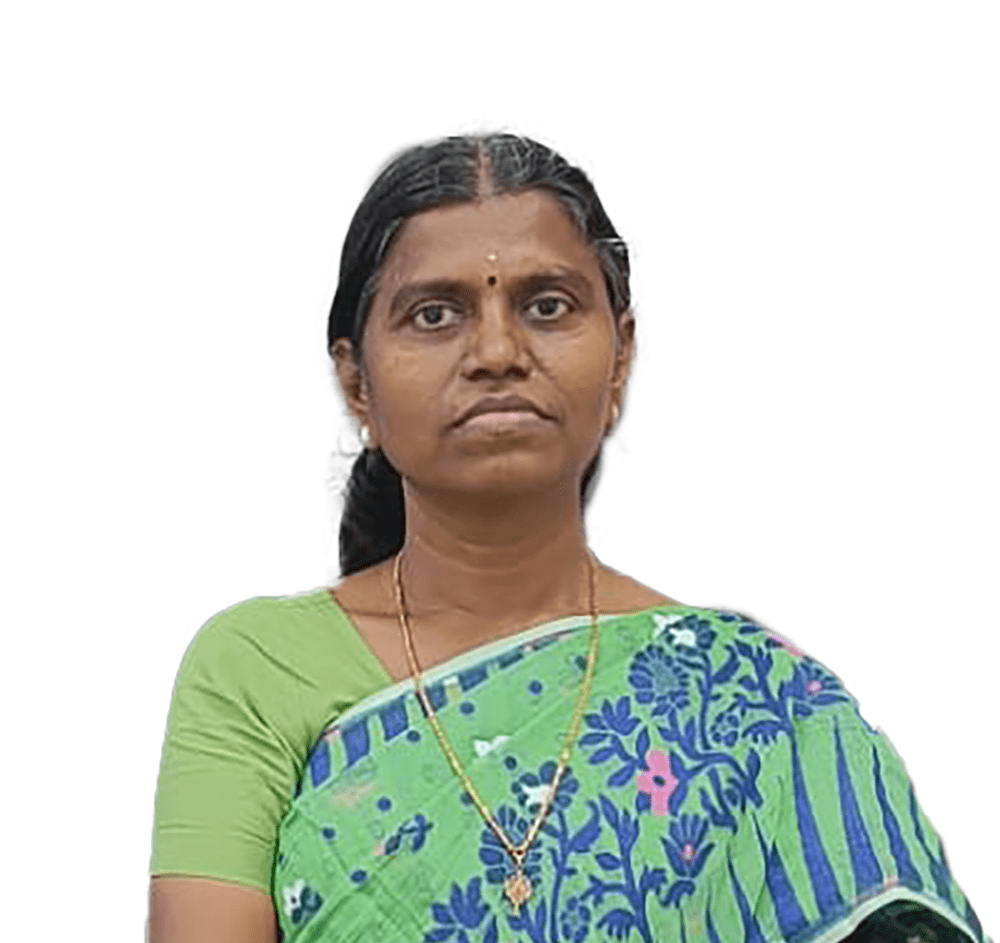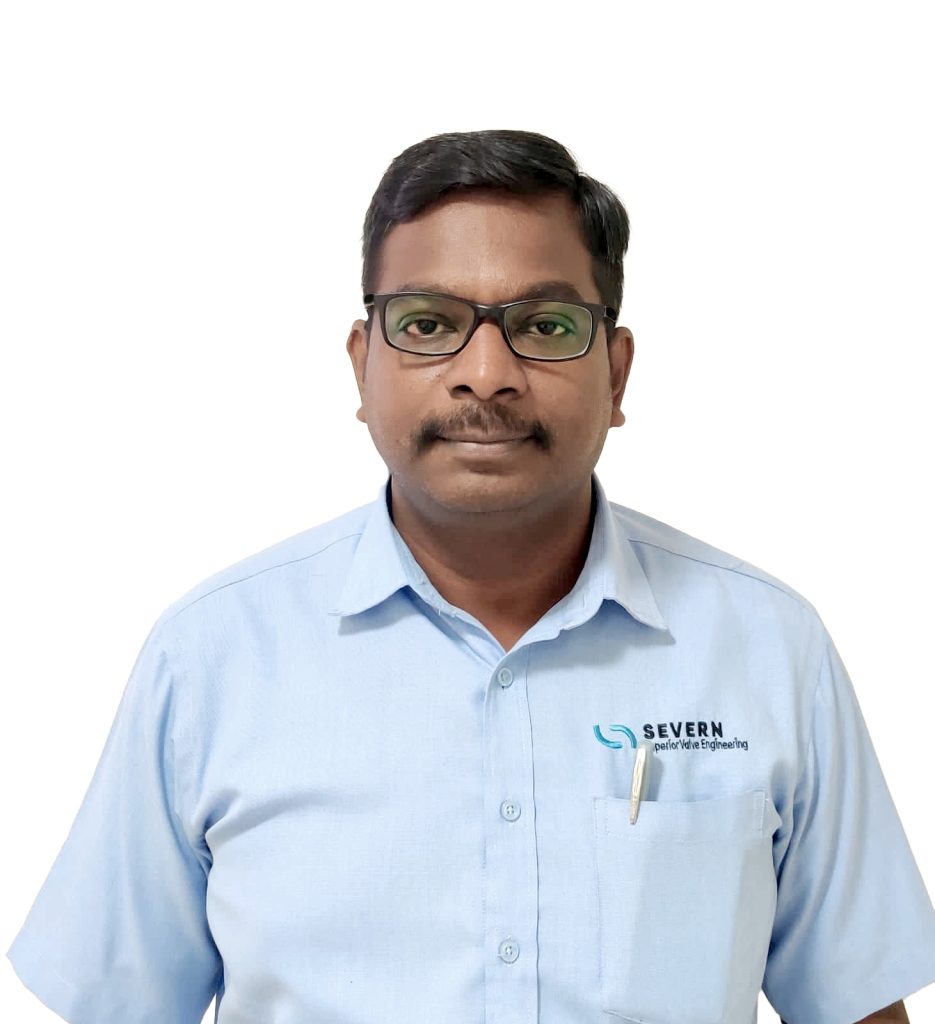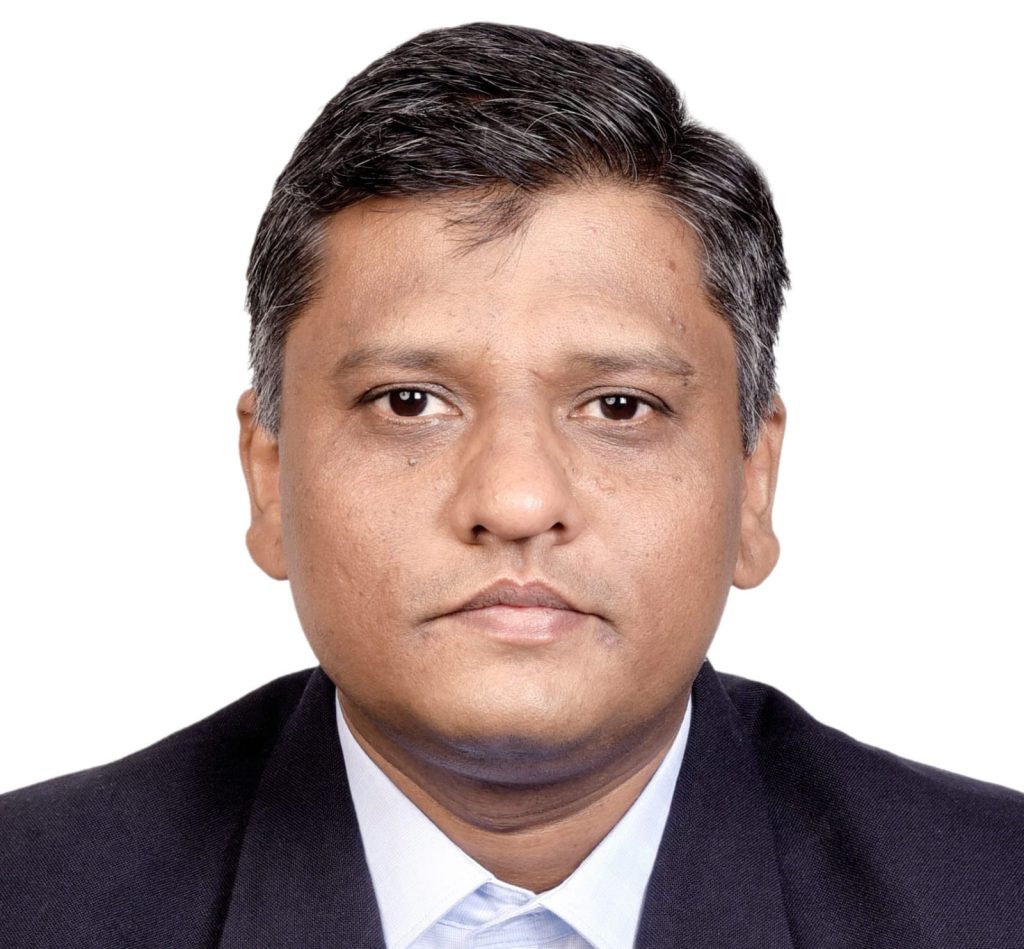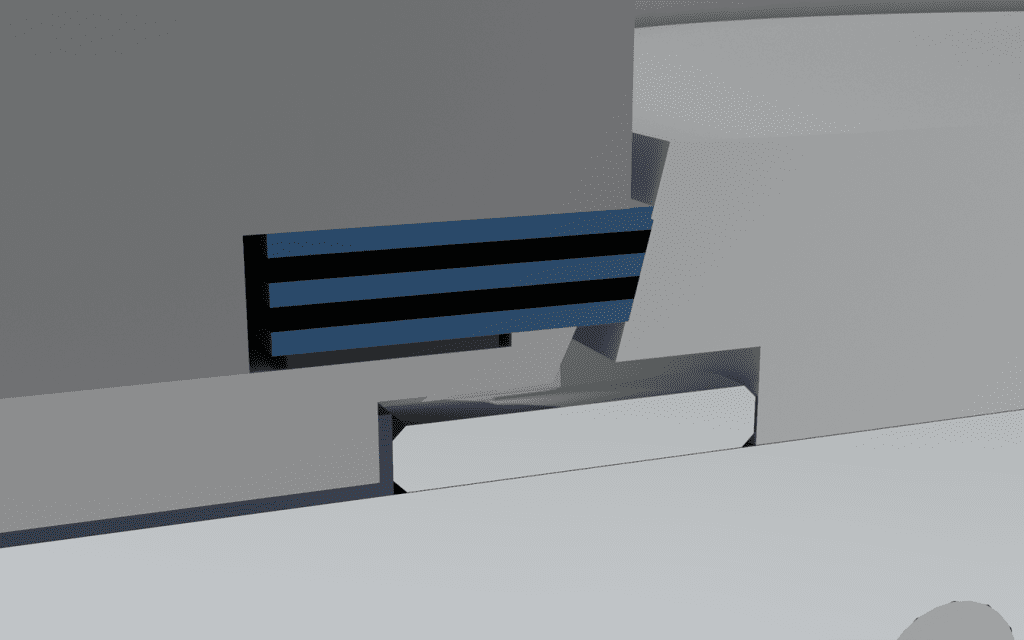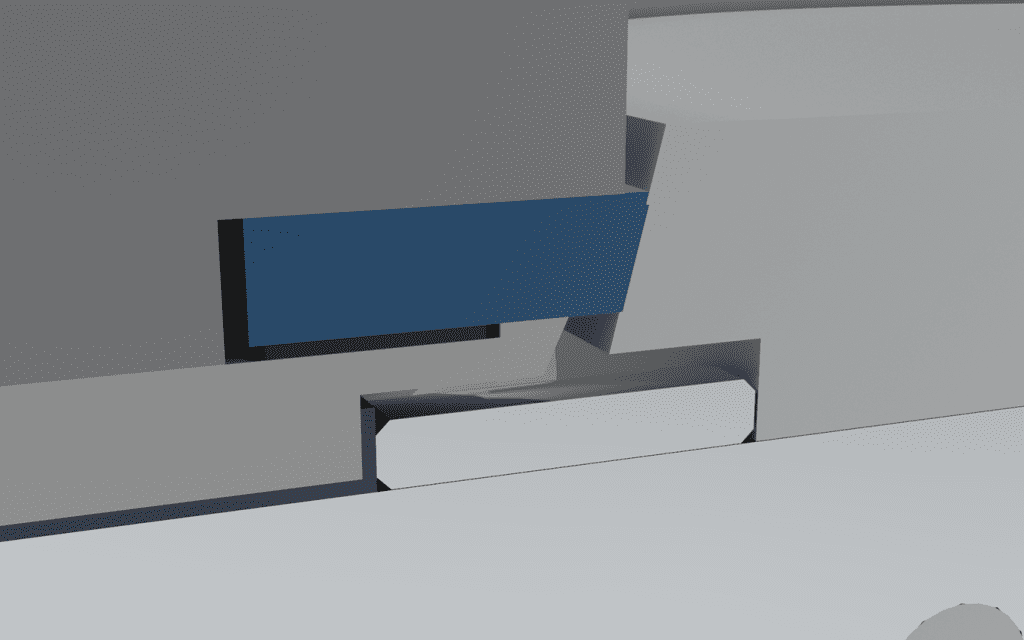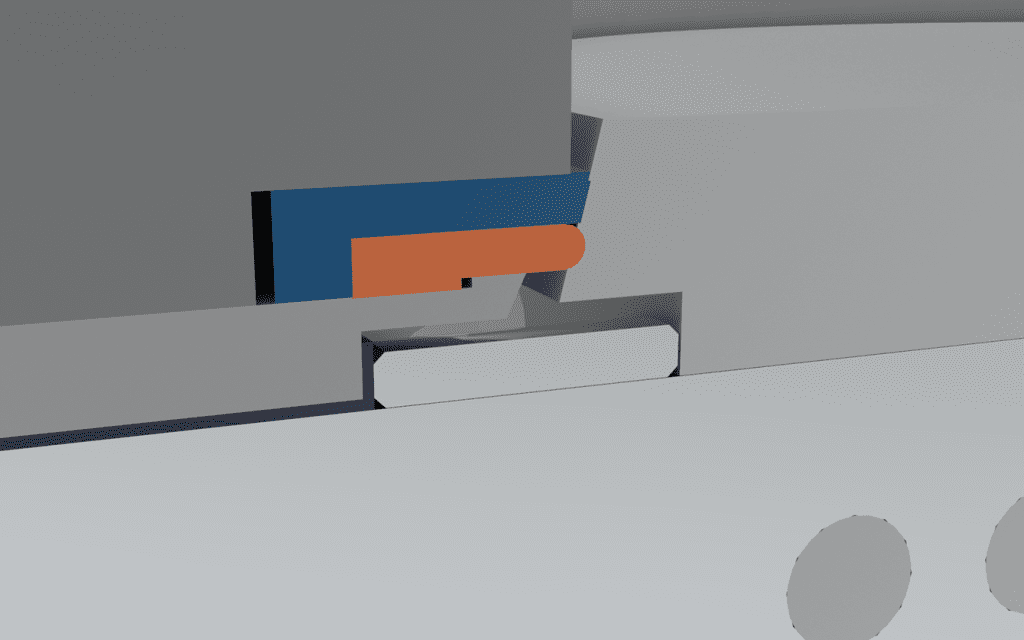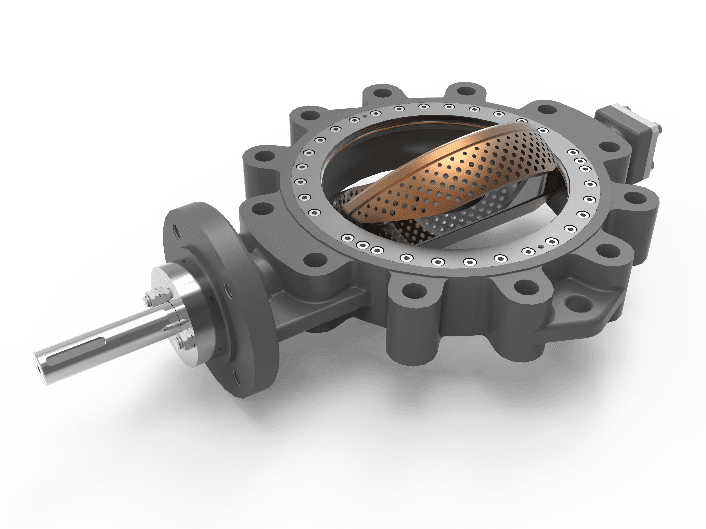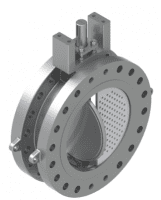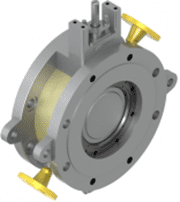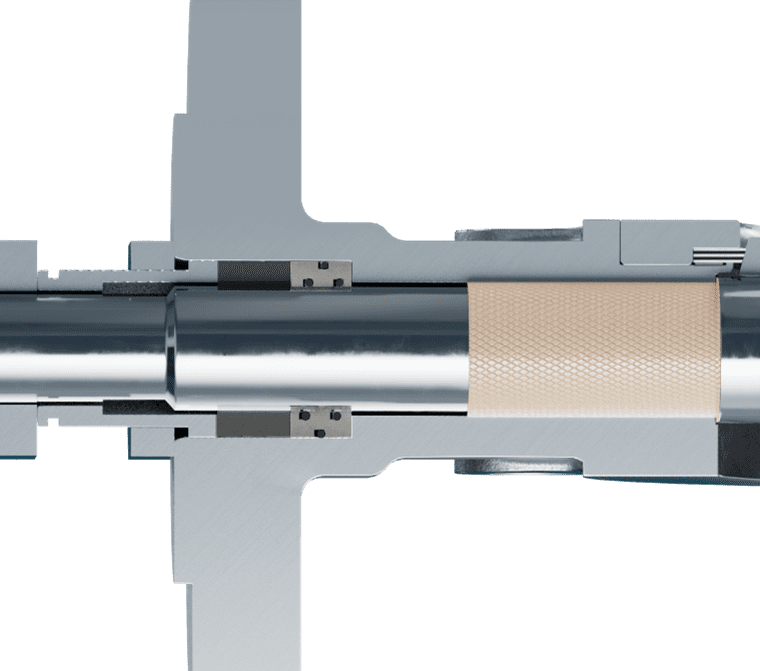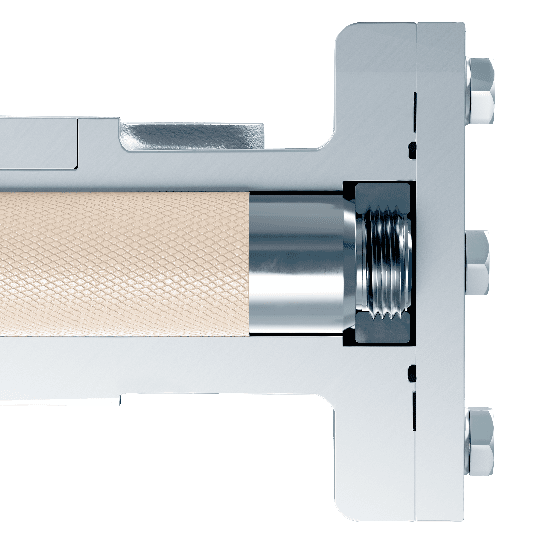Severn Glocon’s Control valves are engineered to meet the stringent requirements of ISO 15848-1, specifically achieving Class A certification for fugitive emissions for pressure ratings up to #2500 which is best-in-class. ISO 15848-1 sets rigorous standards, classifying valve performance based on their ability to contain emissions.
Conventionally, Class A packings are required when any Mutagenic Carcinogenic chemicals, methane, toxic media, hazardous gases and sour gases are suspected to be evident. It is reported that the Oil & Gas industry is responsible for 15% of global energy-related Green House Gas (GHG) emissions. Due to this reported figure, it becomes vital to address these emissions through valves.
Why is ISO 15848-1 Critical for Fugitive Emissions?
This ISO standard evaluates valve sealing performance against fugitive emissions, which can be unintended leaks of volatile or hazardous gases. The certification involves multiple tests, including temperature and pressure cycling, as well as leak rate assessments. Notably, Severn’s valves are capable of meeting the highest (Class A) for stem and body seals, ensuring leak rates remain minimal which is crucial for handling hydrogen sulphide-rich sour gas applications in the Oil & Gas sector.
Technical Aspects:
Severn Glocon’s compliance with Class A specifications under ISO 15848-1 includes advanced seal design that undergoes stringent helium detection testing. In these tests, valves are exposed to high pressures, and leak rates are assessed using sensitive equipment like a helium mass spectrometer leak detector (MSLD). The rigorous testing provides assurance of valve integrity, even under extreme thermal cycling, mechanical cycling, and varying pressures.
Meeting the Challenges of Sour Service:
Valves in sour service handle gasses containing H₂S, which is both highly toxic and corrosive. Severn’s use of specialised materials and advanced sealing techniques ensures resilience against corrosion and leak prevention. This positioning enables Severn to offer reliable solutions that comply with the environmental regulations, prevent harmful emissions, and support the sustainability objectives of Oil & Gas operators.
Ready for High-Sour Service Applications
Severn Glocon’s valves, equipped with FE Gland Packing, are capable of withstanding the highly corrosive environments typical in sour gas applications. The materials and unique sealing mechanisms ensure reliability and minimise corrosion between the stem and packing material, reducing the frequency of maintenance while ensuring top-tier emissions control.
Contact the Severn team of experts for best-in-class engineering assistance with your valve operational issues:
Severn Glocon UK Valves Ltd is a world leader in the design and manufacture of severe service Control, Choke and Butterfly valves. For clients in Scotland and operating in the North Sea, Severn Aberdeen based in Portlethen, serves as the regional hub for both OEM valves sales and service support whilst also offering comprehensive third-party valve support.
OEM Control, Choke and Butterfly valve Support
As an integral part of Severn Glocon UK Valves, Severn Aberdeen specialises in sales and service support for Severn’s Control, Choke and Butterfly valves. These valves are specifically designed for severe service conditions, ensuring reliability, precision performance and longevity. The engineering expertise that Severn Glocon UK and the Aberdeen facility has allows the team to tackle the most challenging environments, providing clients with performance and reliability they can trust.
Third-Party Support
Beyond OEM support capabilities, Severn Aberdeen extends its capabilities to third-party manufacturers. Whether you’re dealing with Control, Isolation, Pressure safety (PSV’s) or Pressure Relief Valves (PRVs), the Severn Aberdeen team provides expert sales and service. This ensures our clients has a one-stop facility for their complete valve management, from procurement to servicing, across a wide range of valve types.
Engineering Expertise at Your Fingertips
Severn Aberdeen’s unique advantage comes from being part of an Original Equipment Manufacturer (OEM). This allows the team to offer unparalleled engineering support to operators and EPCs. Clients can witness their valves and actuators being stripped, tested, and reported onsite while consulting directing with Severn’s expert engineering team for immediate problem diagnosis and resolution. This hands-on approach ensures transparency and rapid decision-making, keeping projects on track for clients.
Complete Testing, Overhaul, and Offshore Support
Severn Aberdeen offers a full suite of testing and overhaul services at the Aberdeen facility. In addition, there is a team of certified valve technicians and offshore containers for offshore TARs (Turnarounds) and onshore shutdowns. This ensures smooth, seamless operations with minimal downtime, reducing the impact on your product schedules and maximising efficiency.
Why Choose Severn Aberdeen?
- Expertise across extensive valve product types.
- Unmatched engineering support.
- Comprehensive service capabilities.
- Local support for Scotland and North Sea region.
Partner with Aberdeen for all your valve needs – OEM or third-party- backed by world class engineering and service support.
Contact the Aberdeen team today to discuss how we can optimise your operations and help you achieve your core imperatives of safe operations and minimum downtime: sales@severnvalve.com
Severn Glocon, a global leader in industrial valve engineering and manufacturing, is proud to announce the opening of its new Engineering Centre of Excellence. Located in Halifax, the Engineering Centre of Excellence is set to drive innovation, enhance engineering expertise, and reinforce Severn Glocon’s ongoing commitment to delivering best-in-class-solutions to customers across the energy, oil & gas and process industries.
The new Engineering Centre of Excellence will serve as a hub for advanced engineering projects, fostering collaboration across disciplines and enabling the development of cutting-edge valve technologies that meet the most stringent of industry standards and customer demands. By leveraging the latest in design, simulation, and testing capabilities, Severn Glocon is positioned to continue offering high-performance, bespoke solutions that deliver reliability, performance and efficiency in the most challenging operational environments.
Jonny Walker, UK Engineering Director, Severn Glocon, commented:
The launch of the Engineering Centre of Excellence marks a pivotal moment for Severn Glocon. This facility will be the engine that drives our next phase of innovation, combining industry-leading expertise with the latest technological advancements. Our team of highly skilled engineers will have access to the tools and resources they need to push the boundaries of what’s possible in valve design, development, and performance. It’s a significant investment in our people and processes, reinforcing our commitment to engineering excellence.
This new facility will support Severn Glocon’s commitment in developing solutions that drive operational efficiency and assist in reducing environmental impact as part of the effort to meet the evolving needs of modern industry.
John Long, Divisional President, Severn Glocon, added:
At Severn, we pride ourselves on being engineering-led and solutions-focused. The establishment of the Engineering Centre of Excellence is a testament to our dedication to maintaining that ethos. This investment enables us to deliver more innovative, robust and customised solutions for our clients. Our customers operate in demanding sectors where reliability and precision are paramount, and this facility strengthens our ability to meet – and exceed – their expectations.
The Engineering Centre of Excellence will also play a critical role in Severn Glocon’s training and development programs, offering a unique environment for upskilling future engineers and deepening expertise across the organisation. It will support the company’s talent pipeline, ensuring Severn Glocon remains a leader in valve engineering and manufacturing for years to come.
As the global demand for energy continues to evolve, Severn Glocon’s new Engineering Centre of Excellence is set to drive the next generation of valve technology and provide best-in-class engineering solutions to customers around the world.
Discover how engineering excellence and heritage has driven Severn’s OCT TOV Butterfly Valve to deliver unmatched reliability in Seawater environments.
Severn’s research & development team has designed a Butterfly Valve that solves the problem of galvanic corrosion and meets strict fire test standards. Utilising the over 60 years of engineering excellence, the team of technical experts achieved this by using Severn’s patented Oblique Cone Technology (OCT). The OCT-SW takes this patented technology to the next level by eliminating the need for graphite in the seal and maintaining firesafe capability.
What is galvanic corrosion and its costly effects?
The impact of galvanic corrosion on critical assets due to seawater process conditions is an enduring problem for offshore oilfields. At best, it increases the workload and repairs associated with planned shutdowns. At worst it can result in rapid or unexpected damage, leading to unplanned or emergency shutdowns. Either way, it is a costly problem which harms efficiency, putting additional pressure on plant operating costs. However, Severn have utilised their engineering heritage, research and development & repair intelligence knowledge to develop a valve that deals with the issue of galvanic corrosion head on.
Why does galvanic corrosion occur? The cause of galvanic corrosion (also referred to as ‘dissimilar metal’ or ‘bimetallic’ corrosion) is an electrochemical reaction between two different conductive materials in close proximity. It results in one – the least noble of the two – being preferentially corroded. To combat this risk, the general rule is ‘do not mix metals’. However, when it comes to the design and development of assets for harsh offshore environments, things are rarely that straightforward.
Modern critical safety systems used on offshore sites are often highly sophisticated
to cope with the extreme natural conditions and industrial challenges with which they must contend. They come with extreme technical demands but must manage physical ones too; systems that need to feed water to combat fires must be durable enough to cope with the corrosive effects of the sea. Seawater service valves play an integral role in the process and their ability to either supply or isolate sections of the water line is a vital safety feature. Therefore, eliminating galvanic corrosion while maintaining firesafe credentials has been an enduring challenge for the industry.
In recent years, the use of graphite sealing technology has surged. Graphite’s extreme range of properties and characteristics makes it an ideal material in many ways. It is soft, flexible, and easy to cut, but it has high heat resistance and is almost inert. However, it is also the only non-metal that can conduct electricity. Furthermore, its nobility exceeds that of noble metals including stainless steel, bronze, and titanium. Yet it is often paired with these materials in valve manufacture, in the form of seals, packings and gaskets. From a galvanic corrosion perspective, graphite has become not only the solution to problems but can often be the cause.
Traditionally, Triple Offset Butterfly Valves have used graphite materials in their construction, which can cause galvanic corrosion in seawater applications. This is a problem because it can significantly reduce the effectiveness of the valve’s sealing components, compromising safety and leading to potential costly unplanned downtime.
By working closely with end users and operators, Severn has recognized this issue, and with its significant engineering heritage and technical expertise, has designed a long-term solution. The Severn team of engineering experts designed a valve that either replaces the graphite components completely or stops them from contacting the line media. This significantly reduces the risk of galvanic corrosion in day-to-day operations and ensures the highest level of safety. Ensuring you achieve safe operations and minimal downtime.
The Oblique Cone Technology (OCT) Seawater (SW) Triple Offset (TOV) Butterfly valve is a revolutionary type of valve designed primarily for use in saline applications, such as offshore oil and gas operations. These valves play a pivotal part in safety systems, as they play a crucial role in firewater systems. Due to Severn’s engineering heritage and technical expertise in the oil and gas operations sector, this valve has been designed with over 60 years of engineering excellence ensuring it helps the end user achieve their core remit of safe operations and minimum downtime.
Severn has developed a hybrid polymer metallic seal that moves away from the use of graphite laminates. By utilising a primary metallic seal with a secondary polymer seal, not only have Seven removed the graphite from the seal but have additionally increased the valves isolation sealing capabilities and maintained the firesafe performance crucial for such critical applications. This coupled with isolating any graphite gaskets and packings from encountering the line media means that at no point during the normal operation of the valve do the graphite and seawater mix, eliminating the risk of galvanic corrosion and the costly effects it can have on production.
In addition to addressing the corrosion problem, Severn’s Butterfly Valves also meet important fire test standards such as API 6FA, API 607, and ISO 10497 accreditations. As such the OCT Valve is certified fire-safe and can be relied upon in critical emergencies for the end user and operators, ensuring safe operations and minimal downtime.
The team also took steps to ensure the valve design could not generate a spark and risk starting a fire itself. They followed the ISO/IEC 80079-36:2018 ATEX standard and ensured that no static charge could build within the valve. This additional element of care renders the new OCT-SW valve design suitable for a wide range of applications, beyond seawater service further emphasising the versatility of the valve design.
The OCT-SW can be manufactured from corrosion-resistant materials such as Aluminium Bronze, Super Duplex, and Titanium, with the added knowledge that anti-blowout protection comes as standard. Available in standard and non-standard face to face dimensions and various body styles such as lugged and double flanged, the valve can be easily retrofitted into existing pipeline spaces and is an ideal upgrade when operators are experiencing issues with galvanic corrosion.
Severn understands the ongoing challenges operators face with reducing and eliminating fugitive emissions and have created a technical solution with the design of its Oblique Cone Technology Triple Offset Butterfly Valve.
Operators are under increasing pressure to reduce fugitive emissions for both onshore and offshore assets in order to achieve their core imperatives of safe operations and minimum downtime. Severn realises the role they play in today’s climate conscious world to help reduce and eliminate fugitive emissions from valves. Utilising the engineering heritage and extensive knowledge in severe service applications, Severn ensures it can offer the most suitable product for the end user.
Through Severn’s ‘Repair Intelligence’ and close operating relationships with end user operators, Severn has been able to understand the difficulties facing operations in the specification, purchasing and servicing of Control, Choke and Butterfly valves that are critical to reducing fugitive emissions across industrial facilities. Severn prides itself in offering technical solutions that perform no matter how severe or critical the application is. Ensuring that the end user gains the best valve performance and reduced maintenance costs over the lifecycle of the valve.
It has long been understood that approximately 60% of fugitive emissions come from valves. Even more so 80% of those emissions are related to the stem/shaft seal. Naturally, the focus is on this area with the relative fugitive emissions standards such as API 622 and ISO 15848. What is often misunderstood is the requirement for the standards to be applicable across varying temperature and pressure differentials. For this reason, Severn has 43 different certificates for sealing systems in valves based on their application requirements, up to 10,000 Psi and 425ºC. By utilising a range of materials from filled graphite through to custom PTEE-based compounds, Severn has, coupled with novel packing designs, been able to achieve tighter leakage rates that had previously been achieved with standard packing sets.
It is vital for the end user to understand the leakage class requirements when fugitive emissions are concerned to prevent over or underspecifying the solution. We often see “fugitive emissions” specified without clarification of the requirements. The various requirements from TUV through API and ISO specifications require different testing methodologies and even different testing mediums. This means that the testing standards are not directly comparable to each other. Severn often see the specification of “Low-e” or “Low emission” packing without reference to the specification. In some instances, these packing sets can have allowable leakage of up to 500ppm, many times that of systems tested to the ISO 15848-1 standard and potentially resulting in detrimental reduced on-site performance and / or higher maintenance costs.
Severn has focused and will continue to focus its testing efforts on ISO 15848 standards as it is understood that these offer the widest range of qualification options whilst not utilising harmful greenhouse gases that can be emitted using some API methodology. The fact that sealing systems are tested on the valves they are designed for and not a standard test fixture ensures maximum customer confidence in our products performance and reliability.
Severn have focused on passing some of the most stringent testing with class A leakage classes and up to 40,000 operations available for some applications. Ensuring that performance is at the heart of our product range, and you achieve your core remit of safe operations and minimum downtime.
To further the commitment to reducing fugitive emissions and reduce the burden on end users to meet tightening specifications, Severns OCT Triple Offset Butterfly Valve offers the fugitive emissions packing sets as standard fitment on all standard valves in the range. Ensuring that the end user experiences maximum valve performance in all applications.
Severn’s engineering heritage and technical expertise have led to the OCT TOV Butterfly Valve being future-proof for changes in the process conditions to provide increased versatility for the end user.
From the outset, Severn made flexibility a key driving force in the design of the Oblique Cone Technology (OCT) Triple Offset (TOV) Butterfly Valve. Due to Severns extensive diverse engineering heritage and excellence, our expert team of engineers understand that processes and application product demands change over time, whether it is the process conditions or the overall requirements of the valve for the end user. Due to this understanding, the Oblique Cone Technology Triple Offset Butterfly Valve has been designed to incorporate multiple seal options, all fully interchangeable with each other, providing maximum application diversity and usability to ensure safe operations and minimum downtime.
The Laminate seal is the “traditional” Triple Offset Valve seal and consists of multiple metal and graphite layers providing isolation sealing.
The OCT HS seal is a hybrid polymer metallic seal, this seal benefits from a primary metal seal and secondary polymer seal, this provides a reliable and repeatable bubble tight seal time after time. This can also be paired with PTFE packings when graphite being in contact with the line media is a concern. The polymer seal is fully compliant with EN ISO 80079-36 (ATEX).
The OCT SW Valve takes the hybrid sealing to the next level with its versatile high performance. Severn utilises the OCT-HS seal and has designed a valve that ensure there is no graphite in contact with the line media to remove the risk of costly galvanic effects such as internal corrosion leading to valve failure. Whilst doing so the OCT-SW also maintains firesafe certification.
Should the sealing requirement not become as critical, and process conditions become more arduous, the Laminate and Hybrid seals can be changed for the OCT-SS solid seal. As the name suggests it is a solid metallic seal, that can be made from hard-wearing alloys to add longevity to the sealing life of the valve in arduous conditions and can offer a control valve seat leakage.
Based on Severns comprehensive history of severe service control, our team of engineering experts work closely with operators and end uses to identify the correct seal and material selection to provide the maximum reliability and productivity further ensuring minimum downtime.
All the OCT seals are interchangeable and can be upgraded without the need for main valve components being replaced, further emphasising the OCT TOV Butterfly Valves versatility. The fully in field serviceable valve can be upgraded on-site without the need for specialist tools or knowledge, this further ensures that costly unplanned downtime and site waste is kept to a minimum, along with potential loss in production for the end user. All the seal options can be changed on site within a small space of time to ensure site maintenance costs are reduced by upgrading the existing valve rather than discarding and replacing with a commodity product each time.
Each OCT valve is specially designed to be versatile and ensure it has multiple purposes for multiple conditions whilst still delivering maximum performance. With the introduction of the interchangeable seal, these can be easily swapped out to match the end users’ requirements, should they change.
The Triple Offset Butterfly Valve Cutting Edge Design Features Leads to Comprehensive Application Coverage.
Incorporating over 60 years of engineering excellence and technical expertise in valve engineering and application, Severn offers an industry leading and patented engineering technology solution(s) for Butterfly Valve requirements and applications with the Oblique Cone Technology (OCT) Triple Offset (TOV) Butterfly Valve. By utilising Severn’s ‘Repair Intelligence’ knowledge which involves providing real market feedback from extensive in-depth analysis from failed valves. Severn have designed each facet of the OCT TOV Butterfly Valve to provide the most accurate, reliable, and robust service capability and performance possible to help the end user achieve their core remit of safe operations and minimum downtime.
Severn’s OCT design uses circular sealing geometry, unlike traditional triple offset designs that use an ellipse. The benefit of circular geometry is that it provides a uniform sealing load around the circumference of the sealing diameter, providing a reliable and repeatable shut-off. By using circles rather than ellipses, it allows Severn to use proven circular sealing knowledge and incorporate this into the TOV Butterfly Valve.
In addition, to this we can also add specialised flow control trims that are traditionally found on double offset valves. These control trims include Anti Cavitation / Low noise, half baffle & full baffles. We can also add special features such as steam jacket and purge ports should they be required, onto our Triple Offset design.
Process conditions can change with time. Severn have ensured the interchangeability of the seal, should the sealing requirement not become as critical, or process conditions become more arduous. The HS seal can be changed to a laminated seal, or if conditions dictate, a solid seal. This can be done without the need for main valve components being replaced. The complete in-field serviceable valve can be upgraded on site without the need for specialist tools or knowledge ensuring possible down time and loss in production is kept to a minimum.
The interchangeability and versatility of the seal allows for Severn’s Triple Offset Valve to be used for both isolation and control applications and processes. The diversity of the OCT TOV Butterfly Valve and its functional usability for an extensive range of both isolation and control applications leads to the potential savings in stock holdings for end users who can use stock this one valve instead of stocking two. This in turn allows for potential cost savings for the end user on stock holding by reducing the need to stock multiple valves due to the extensive coverage that the OCT TOV Butterfly Valve offers.
Severn have designed all their Triple Offset Butterfly Valves with safety as paramount and therefore engineered the product with anti-blowout at both ends of the valve. This negates any chance of the shaft blowing out. The reduced shaft diameter at the drive end ensures the shaft cannot blow out through the packing follower and anti-blowout ring on the threaded shaft end ensures positive engagement without the need for additional fasteners.
The OCT range also comes with hard facing on the disc as standard with options to upgrade the standard hard facing to weld overlays such as stellite 6, ensuring and reliable seal and extended service life.
A quarter turn design ensures ease of actuation for both control and isolation purposes. Whether this be via an actuator or gearbox, the quarter turn design allows for simple operation.
As standard, Severn’s OCT TOV Butterfly Valve includes fugitive emission packing to ISO 15848 with options to change to meet customer specific requirements such as Shell 77/312 available.
The OCT valve range has been firesafe tested & certified in accordance with the strict fire test specifications set out in the standards ISO 10497, API 607 & API 6FA. Withstanding extreme temperatures of up to 1000°C whilst still sealing. Further underpinning the performance capabilities and validating the valve performance, ensuring this valve can be suitable for an extended range of applications and process requirements, leading to safe operations and reduction unplanned downtime for the end user.
Severn offer the OCT TOV Butterfly Valve in all cast materials. From basic carbon steels to specialist alloys such as Monel, Titanium & Hastelloy. Severn can provide the correct material selection for your application. Additional surface coatings such as stellite, armoloy, chrome or weld overlays are available upon application and request.
